OCZ Vector 180 960GB SSD Review
Why you can trust Tom's Hardware
A Closer Look At The Vector 180
The Vector 180's packaging follows OCZ's familiar form since the Toshiba acquisition. The retail box proudly announces the drive's features and performance specifications.
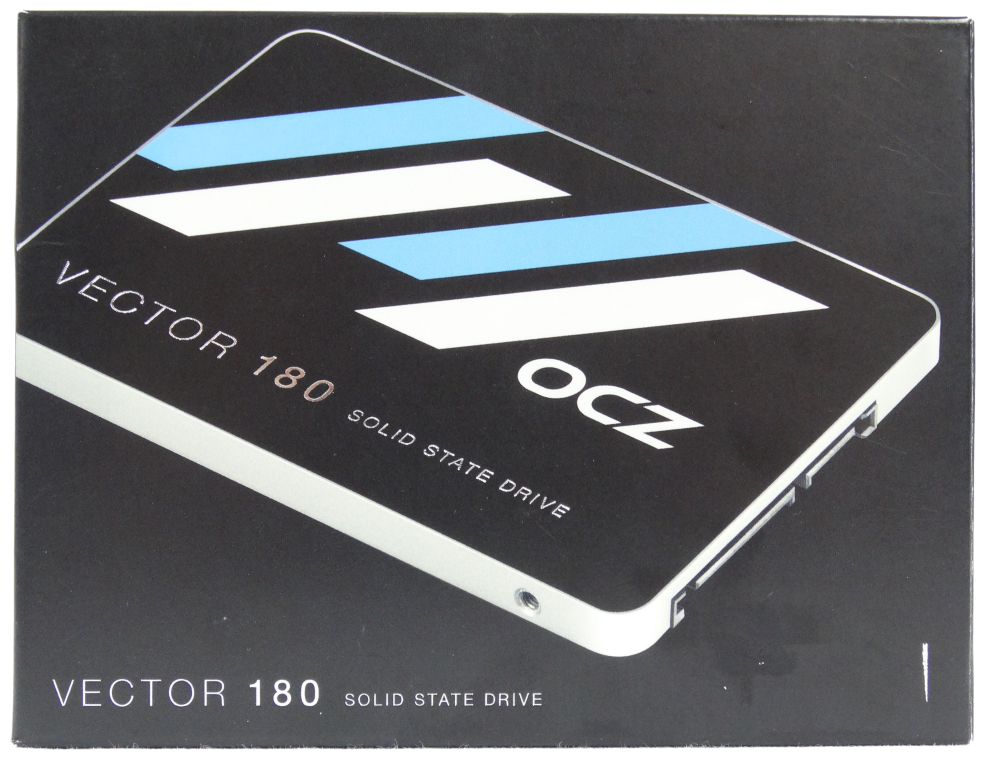
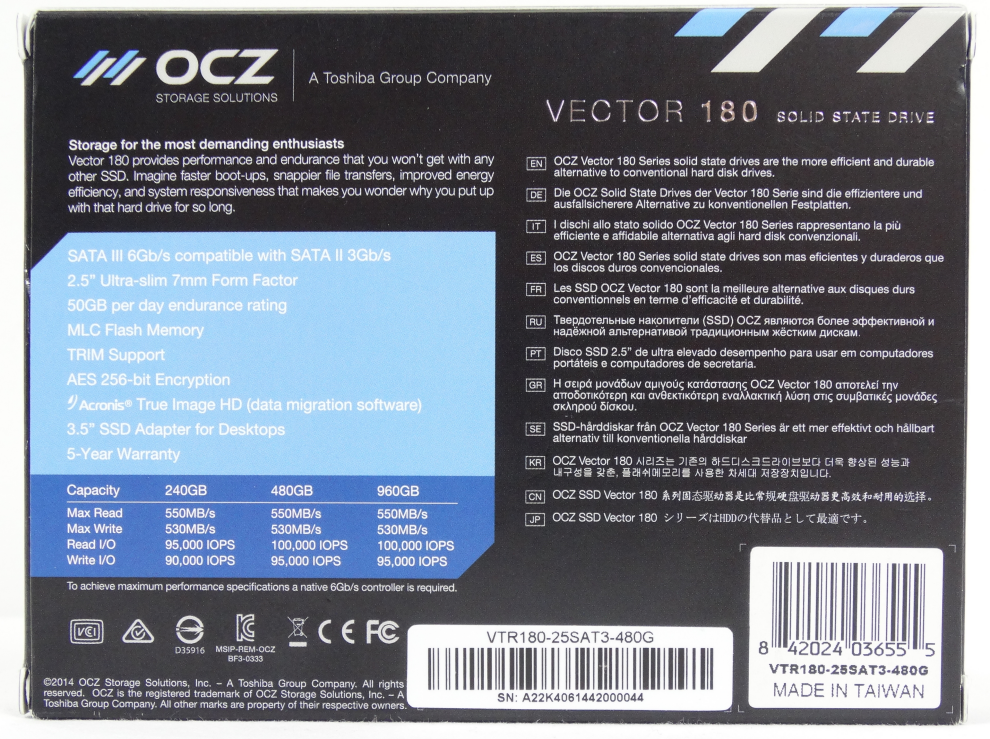
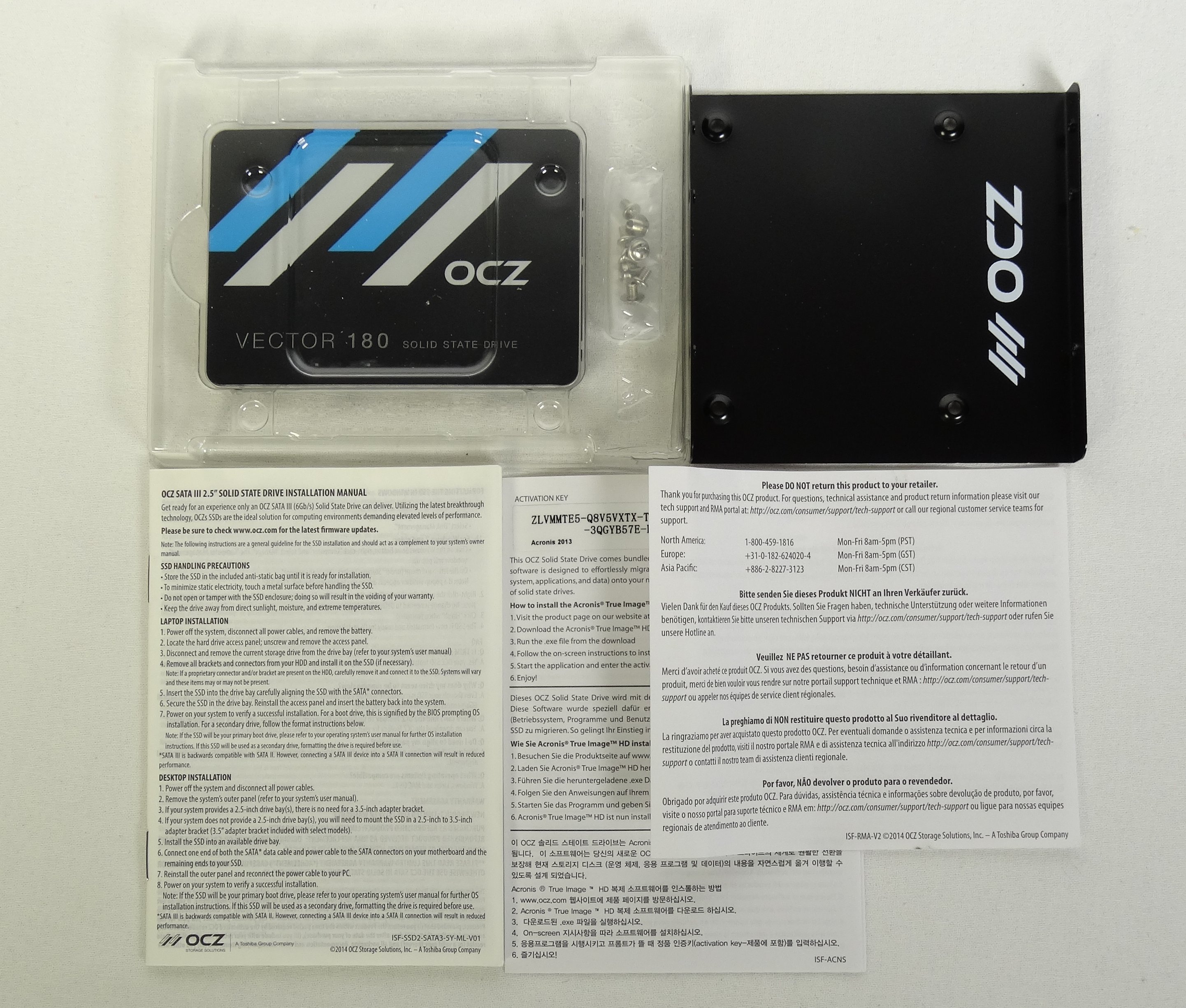
Inside, we find what I like to call The OCZ Standard. When consumer SSDs first appeared, OCZ created the now-standard accessory package. Over time, other companies subtracted from it. But OCZ continues adding. Inside the box, you get a desktop adapter bracket, mounting screws, warranty paperwork and a key for Acronis (drive cloning software that makes it easy to migrate your data to a new target SSD). The utility represents an easy way to get up and running without reinstalling Windows and your program files.
You're also able to download OCZ's latest support suite called SSD Guru.
OCZ continues to use a heavy metal chassis. The enclosure is one of the strongest you'll find, not that the internals need this much protection. But the case does double as a heat sink for Indilinx's Barefoot 3 controller.

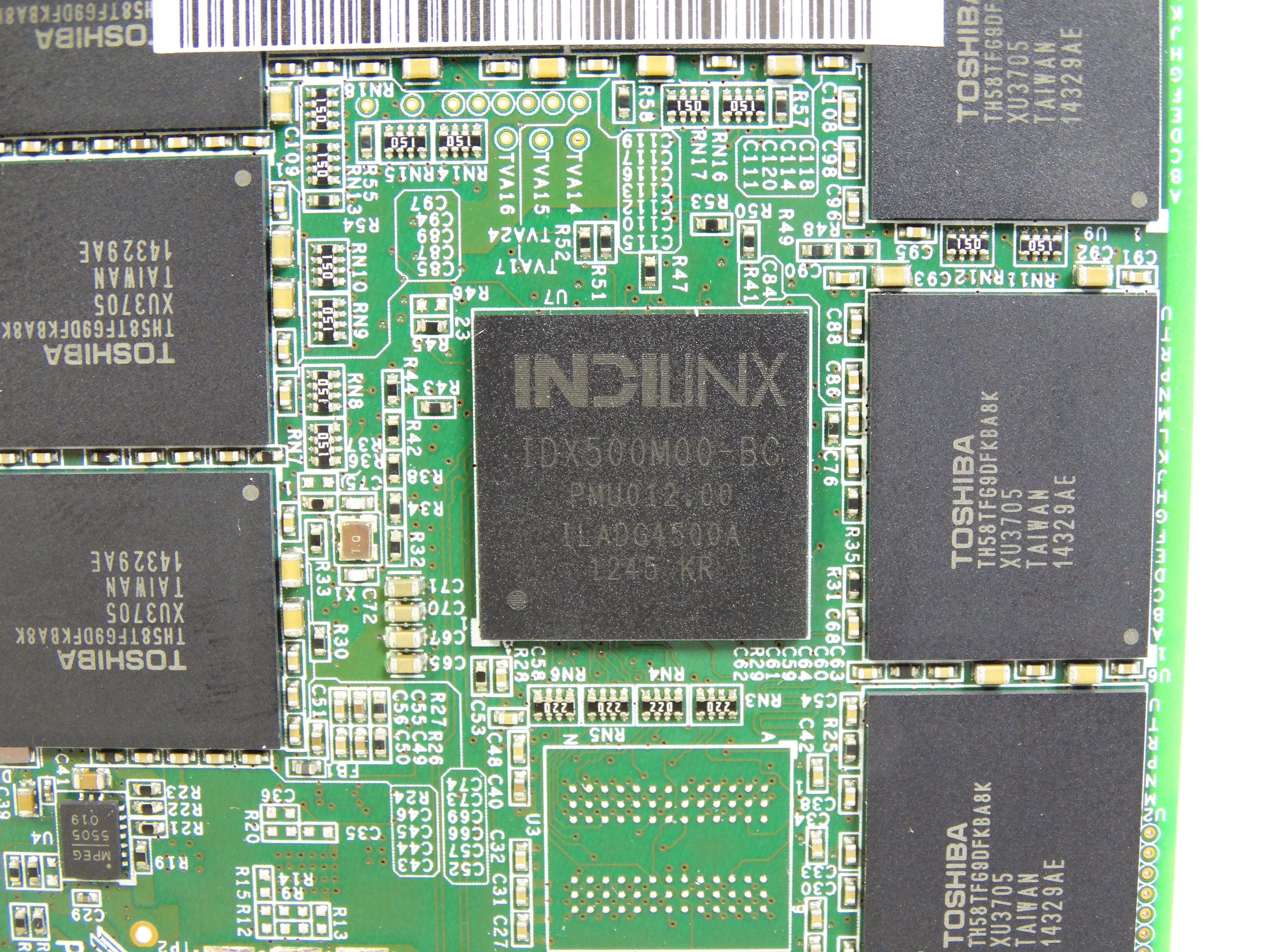
The Vector 180's chassis sports a 7mm z-height, so it fits in mobile platforms requiring the thinner footprint. Not much else changes, physically at least, since the Vector 150.
Inside, the Indilinx Barefoot 3 controller is the same; it's used on a few other OCZ products (the original Vector, Vector 150 and AMD Radeon R7 SSDs all use this processor). Revision M00 has a higher clock rate than the M10 version used in the Vertex family.
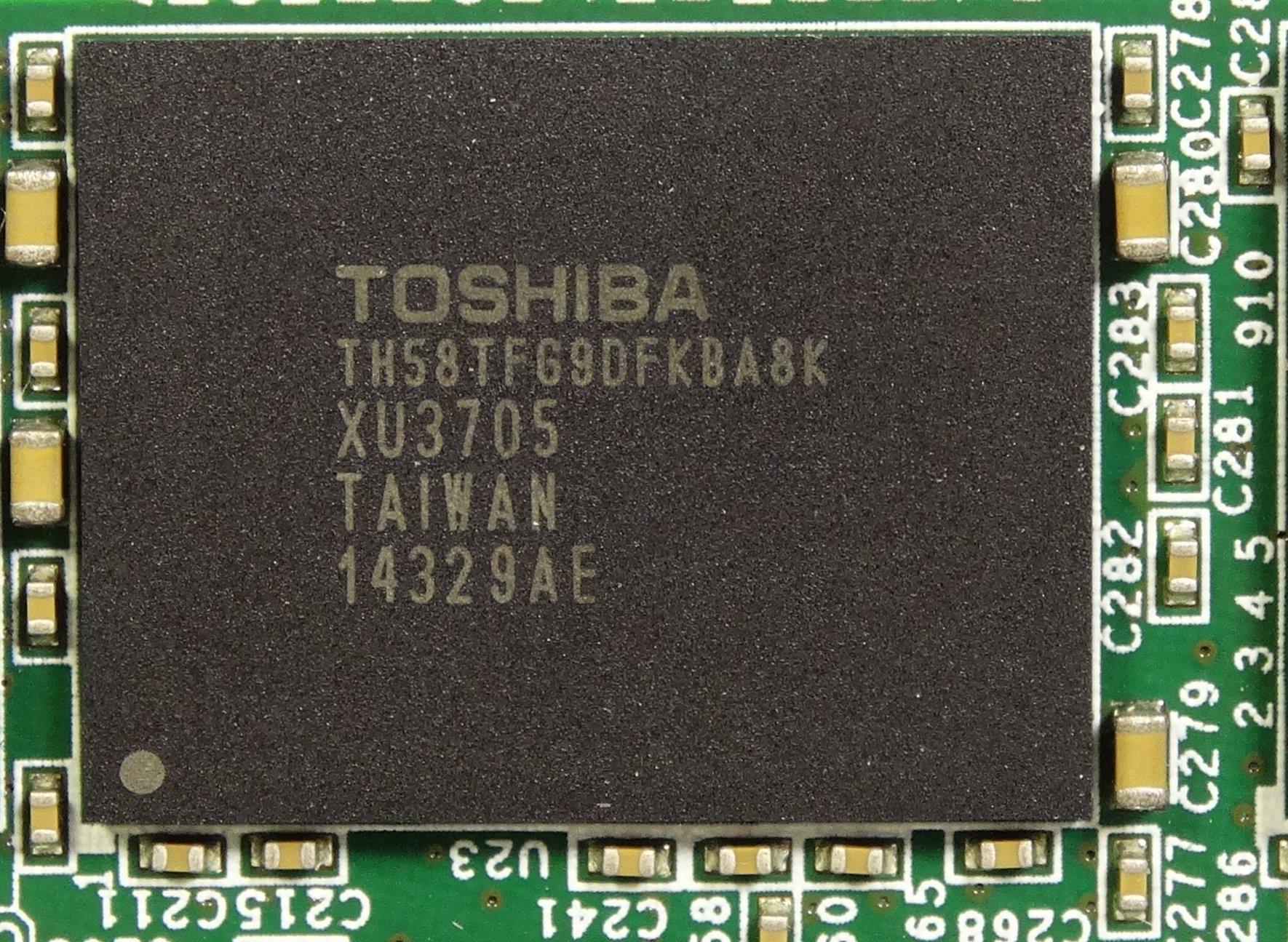
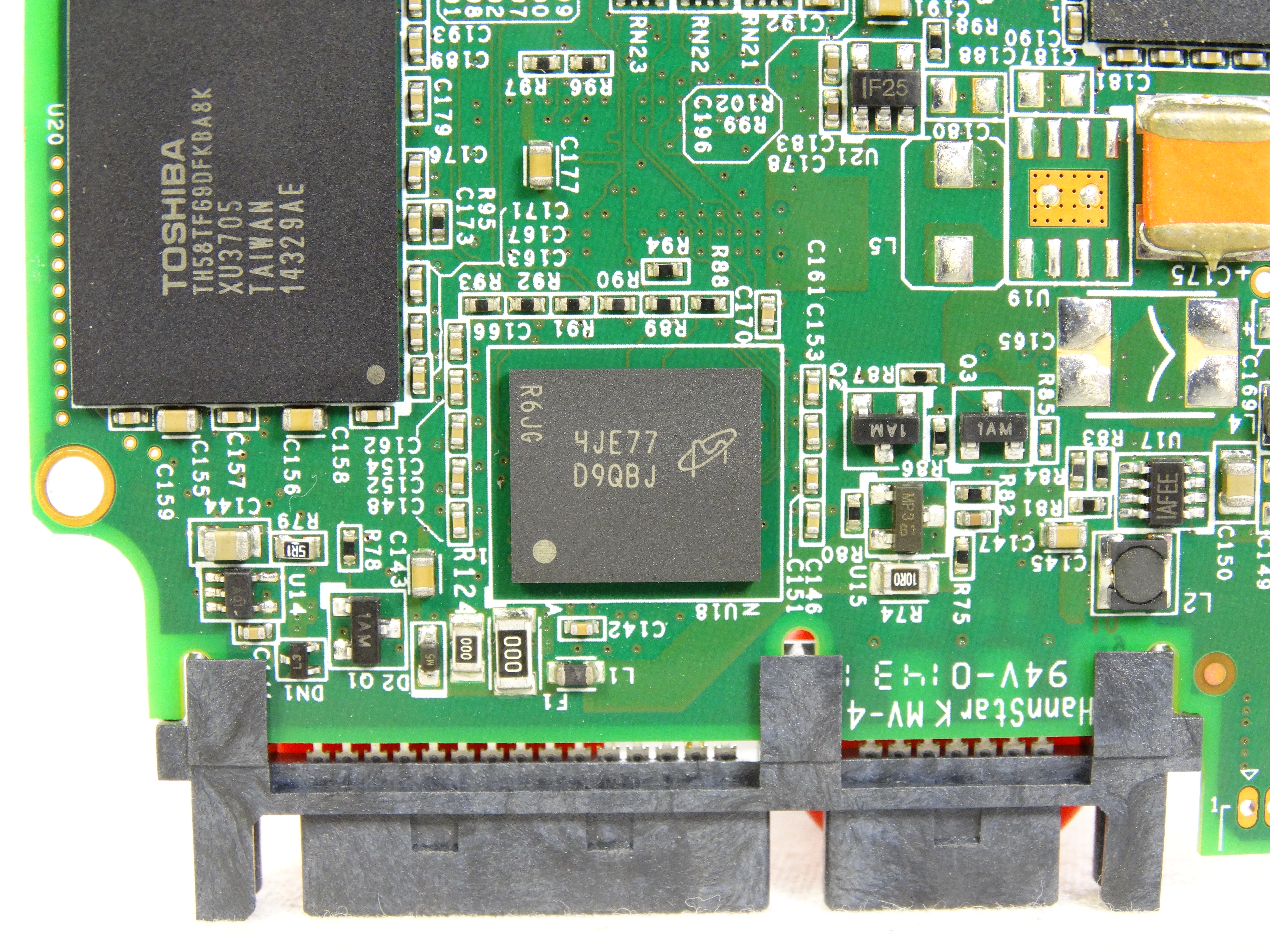
Like the Vertex 460A, OCZ's Vector 180 employs second-generation 19nm NAND. To reach 1TB, the company uses 16 packages, eight on each side of the PCB. A 1GB Micron DRAM cache is split between two packages, again one on each side of the board.
Get Tom's Hardware's best news and in-depth reviews, straight to your inbox.
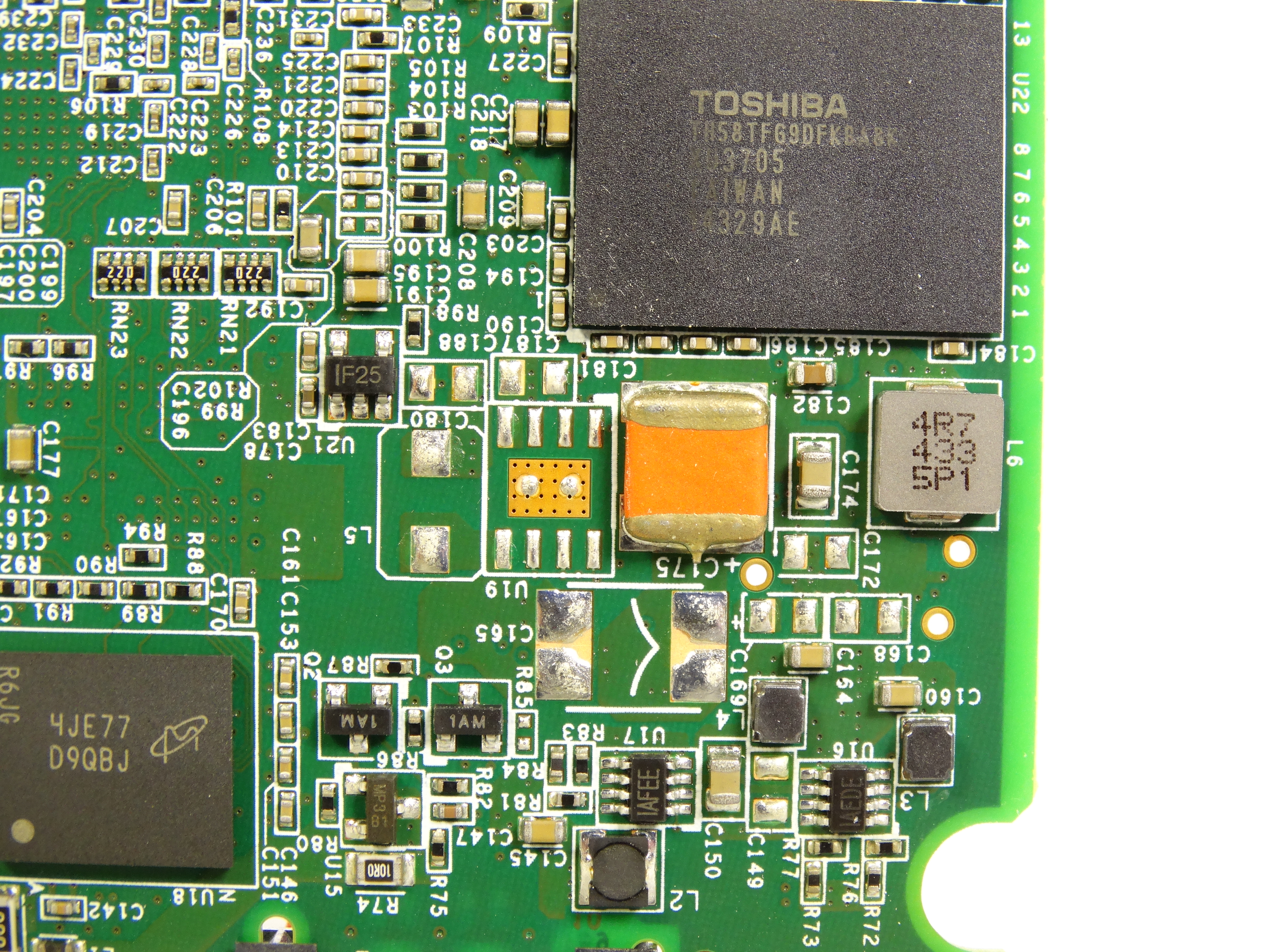

And then there's the Vector 180's big addition, an orange tantalum capacitor. These are generally found on enterprise-class SSDs. The capacitor holds enough charge to power the DRAM, controller and NAND until data at rest can be pushed from DRAM to the flash. This reduces the chance of your SSD dying. After all, corrupt table data is one of the leading causes of SSD failure.
Current page: A Closer Look At The Vector 180
Prev Page Introduction And Specifications Next Page Four-Corner Performance Testing
Chris Ramseyer was a senior contributing editor for Tom's Hardware. He tested and reviewed consumer storage.
-
damric Now that's what I'm talking about. Adding the capacitor should keep them from having so many RMAs from loss of power/hard resets. I usually only see the capacitor added to enterprise solutions, so I'm excited to see it as a feature in consumer SSDs.Reply
THW, you need to test all SSDs with about 50 of these hard power loss cycles and see which ones become unresponsive to motherboards and bricked. -
PraxGTI Intel has been doing this on consumer drives for reliability for a long time. OCZ cuts corners. From unstable DDR3 RAM to unreliable Vertex SSDs (Red light, bricked, within weeks of initial use), I for one won't buy OCZ products anymore without big warranties and longer-term support. I have never had an issue with an Intel drive, totally worth the extra money and reliable performance.Reply -
uglyduckling81 I thought OCZ was gone. I have had 2 of their drives and never had a problem. The only reason I'm not still using my original Agility is because my laptop got stolen, but I'm sure someone is still enjoying the speed it offered. That thing cost over AU$500 for 128gb but it was worth every cent.Reply -
I have two OCZ drives, with Terabytes written to them and no problems at all. The problems seem mostly hearsay or people that don't know how to read SMART data. One has 19 TB of writes (my vertex 3 doesn't show writes, but I'd estimate it's around that or higher). Both have around 19 000 hours of heavy use.Reply
That being said, with 3d NAND available, it just doesn't make sense to purchase anything except Samsung drives these days. I'm just waiting for prices to come down, and nvme.
But OCZ is very reliable, don't drink the kool-aid. -
ykki Hopefully this move (adding the capacitor) will also encourage(force?) other players in the market to follow suit.Reply -
damric Reply15546008 said:I have two OCZ drives, with Terabytes written to them and no problems at all. The problems seem mostly hearsay or people that don't know how to read SMART data. One has 19 TB of writes (my vertex 3 doesn't show writes, but I'd estimate it's around that or higher). Both have around 19 000 hours of heavy use.
That being said, with 3d NAND available, it just doesn't make sense to purchase anything except Samsung drives these days. I'm just waiting for prices to come down, and nvme.
But OCZ is very reliable, don't drink the kool-aid.
Out of 6 of my OCZ drives, 5 of them bricked after hard reset or power loss. I was able to raise my Agility 2 back from the dead though. Since then I've learned my lesson and I don't do heavy overclocking tuning/testing/benching on SSD to minimize crashes.
I've had other SSDs with same problem. It's most common on Sandforce, but I see it happen to Indillix and Micron controllers as well. -
David Cruit Wait. Forced shut downs screw up SSDs? I overclock a lot and I've done at least 100 forced shut downs, and my SanDisk Extremes (I not II) are still working as good as ever.Reply -
Reply15546281 said:15546008 said:I have two OCZ drives, with Terabytes written to them and no problems at all. The problems seem mostly hearsay or people that don't know how to read SMART data. One has 19 TB of writes (my vertex 3 doesn't show writes, but I'd estimate it's around that or higher). Both have around 19 000 hours of heavy use.
That being said, with 3d NAND available, it just doesn't make sense to purchase anything except Samsung drives these days. I'm just waiting for prices to come down, and nvme.
But OCZ is very reliable, don't drink the kool-aid.
Out of 6 of my OCZ drives, 5 of them bricked after hard reset or power loss. I was able to raise my Agility 2 back from the dead though. Since then I've learned my lesson and I don't do heavy overclocking tuning/testing/benching on SSD to minimize crashes.
I've had other SSDs with same problem. It's most common on Sandforce, but I see it happen to Indillix and Micron controllers as well.
Sounds like BS. You have 6 OCZ SSD? Let me guess, you have 30 TB of precious data and 196GB of ram. But no UPS?
I'll admit, I've never used their agility drives, I went with Vertex both times, 3 and 4.
Sorry if I sounded harsh, it's just your bash against OCZ sounds like every other (invented) one. How many people buy 6 drives? And why buy 6 SSD drives? And you have many other SSD drives, many of which went bad, with both Indillix and Micron controllers. It doesn't make sense.
If you work for a corporation, you have UPS and redundant power supplies. If you're an individual, you can't have had so much experience with so many hard-drives. So you're a liar. Like so many a-holes online that try to discredit OCZ. Everyone I know that has used OCZ has had great experience, except for early drivers that did cause problems, mostly lost data, rarely lost drives. -
NeatOman Corsair, Samsung, Sandisk, Intel.. the rest i don't care for, not worth taking a risk if a new generation is good or not. Those companies have a great reputation of only selling SSD's that are dependable. If its in a desktop and you don't have an UPS then look for a PFM, but IMO you shouldn't half ass it as it will still lose data because it wont write what is still in the RAM. It's only $40, and should be replaced every two years.Reply -
damric Reply15546723 said:15546281 said:15546008 said:I have two OCZ drives, with Terabytes written to them and no problems at all. The problems seem mostly hearsay or people that don't know how to read SMART data. One has 19 TB of writes (my vertex 3 doesn't show writes, but I'd estimate it's around that or higher). Both have around 19 000 hours of heavy use.
That being said, with 3d NAND available, it just doesn't make sense to purchase anything except Samsung drives these days. I'm just waiting for prices to come down, and nvme.
But OCZ is very reliable, don't drink the kool-aid.
Out of 6 of my OCZ drives, 5 of them bricked after hard reset or power loss. I was able to raise my Agility 2 back from the dead though. Since then I've learned my lesson and I don't do heavy overclocking tuning/testing/benching on SSD to minimize crashes.
I've had other SSDs with same problem. It's most common on Sandforce, but I see it happen to Indillix and Micron controllers as well.
Sounds like BS. You have 6 OCZ SSD? Let me guess, you have 30 TB of precious data and 196GB of ram. But no UPS?
I'll admit, I've never used their agility drives, I went with Vertex both times, 3 and 4.
Sorry if I sounded harsh, it's just your bash against OCZ sounds like every other (invented) one. How many people buy 6 drives? And why buy 6 SSD drives? And you have many other SSD drives, many of which went bad, with both Indillix and Micron controllers. It doesn't make sense.
If you work for a corporation, you have UPS and redundant power supplies. If you're an individual, you can't have had so much experience with so many hard-drives. So you're a liar. Like so many a-holes online that try to discredit OCZ. Everyone I know that has used OCZ has had great experience, except for early drivers that did cause problems, mostly lost data, rarely lost drives.
I had an Agility 2 (failed), Agility 3 (failed), 3 Vectors (all failed) (2 came from RMA), and 1 Vector 150 (still in use), I also have a PNY Optima (first one failed), and an m500. I'm on a first name basis with the OCZ techs, btw. They always do me good when it comes to RMA, despite the fact that I broke a lot of drives. They pay for all my shipping now, and upgraded my last Vector to the 150 which is still going strong despite the fact that I haven't been all that careful with it.
I test a lot of hardware in my lab, but I'm only a small time overclocker/bencher. I really don't own that much compared to a lot of the people around here. I only have 4x entry/mid-level gaming rigs up and running right now at the house.
You can check out my HWBOT profile and see the dozens of hardware submissions I have made over the years, if you still have doubt about my credentials, or just ask the mods around here.